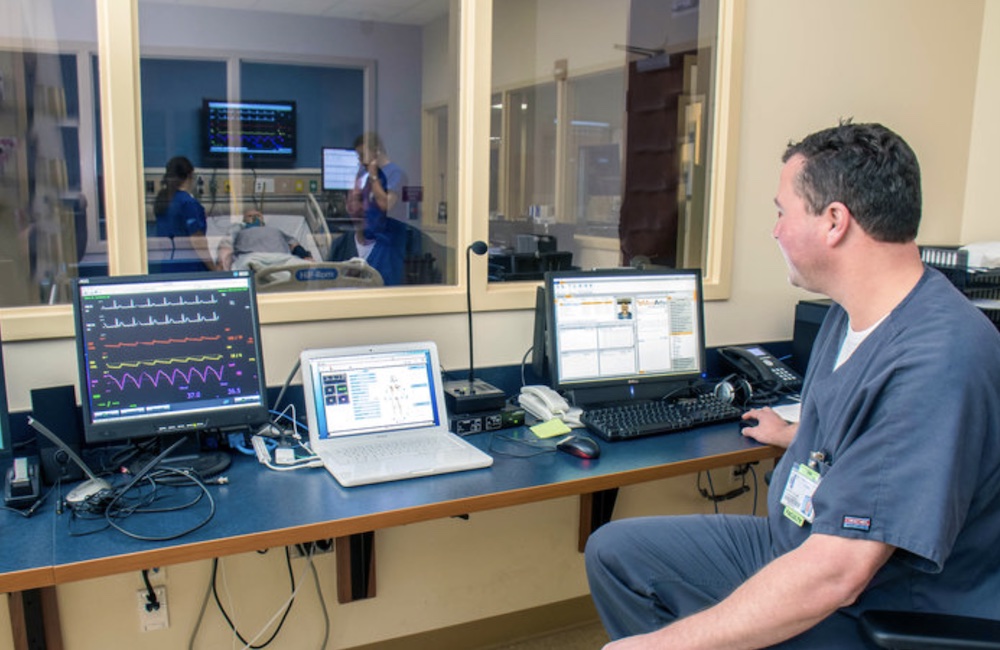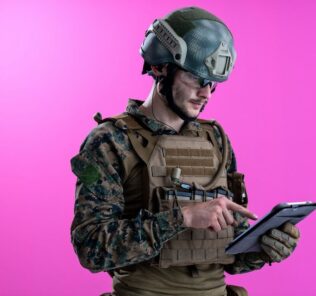MedAffinity EHR Software Provides Powerful Learner Experience
Today, healthcare simulation professionals and leaders must be able to recognize that individual hospitals and educational simulation environments possess different requirements to solve their technological issues. Solutions to these problems must be custom-tailored to each clinical simulation environment, without compromising the learner experience utilizing real-world EHR. This is why the software company MedAffinity remains dedicated to providing innovative, intuitive, and powerful electronic health records software for training the next generation of medical professionals. To do so, the company harnesses the full capability of data-driven computing and thereby delivers powerful data capture and speeds the documentation process – always with the specific needs of education in mind.
This software is designed to make the documentation process feel as natural as possible, with an interface that looks, acts, and feels like a real document. Relying on a flexible interface, MedAffinity easily adapts to new documentation and curriculum requirements without any of the delays, expensive upgrades, or convoluted configurations associated with other alternatives. With MedAffinity, clinical simulation educators who want to amend orders can do so by simply inputting a medication into the system and adding the medicine into the orders set. With a mouse click, learners are provided with on-the-fly changes, making clinical simulations more realistic and giving educators greater flexibility to create an ideal healthcare simulation experience.
With MedAffinity’s unique Smart Reset function, administrators no longer have to spend hours before each healthcare simulation reentering the information learners need at the start of the clinical simulation scenario. Whereas other programs automatically clear out all of the previous day’s content, leaving faculty members endlessly scrambling to reenter the initial information learners see, MedAffinity’s Smart Reset uses an administrative panel to choose what remains in the system at the beginning of each clinical simulation.
Sponsored Content:
For example, if a healthcare simulation educator wants their learners to see a doctor’s visit or labs, MedAffinity allows them to customize an initial starting state for each scenario. After the clinical simulation is complete, with a button click you can clear out the previous healthcare simulation entries and reset the scenario back to your custom state–no additional data entry is required. The previous data remains securely stored in MedAffinity’s system, but now the educator is instantly ready for the next healthcare simulation.
This means that, with MedAffinity’s solutions, educators do not need to go through the hassle of changing from the healthcare simulation scenarios they already have and adapt their healthcare simulation program to new, rigid content. The software lets them take the scenarios they want to use and integrate them into the MedAffinity system–with no add-on fees.
REGISTER TODAY: Champions of Simulation Virtual Symposium
- Wed. April 13th, 2022 | 8AM-4PM PDT, UTC-7
- Join Live & View Recordings for 3 Months
- 6 CEs Offered | CMEs in Application
The company’s Customizable Keyword Rubric Grading System can shave countless hours off the task of grading assignments. Data field and keywords searches can easily be applied to learner templates. The EHR will automatically highlight the keywords and phrases in the learner’s work as well as calculate a score based on a user-defined keyword point system.
Sponsored Content:
Notably, MedAffinity avoids shrink-wrapped products, dedicating the company’s efforts toward making sure that the EHR works for each educator’s unique educational needs. With MedAffinity EHR, they can focus on the power of the software and all that it has to offer faculty members and the learners without sacrificing your tried and true curricula.
This thinking is rooted in the belief that faculty and administrators, not an educational EHR, should decide what and how learning outcomes are achieved. MedAffinity stresses that an educational EHR should allow these learners to focus on learning to care for people, not wrangling software. And we think your simulation staff shouldn’t have to spend time performing repetitive item-by-item deletion after each simulation session.
Proving this belief effective, the University of Akron’s Spring 2016 study “Electronic Health Records in the Academic World,” shares that utilizing EHRs leads to an increase in preventative care, enhancements in drug monitoring, and increased use of evidence-based guidelines for interventions. The article notes that, apart from patient-specific benefits, they also foster job satisfaction through better communication, quality of data, organization, and the ability for multiple people to access and chart data more efficiently and legibly. This information is incredibly important as users who are not properly trained can be prone to errors in decision-making.
Additionally, the company believes there are several disadvantages to EPIC Play education, including the setup and accessibility. According to MedAffinity, Epic Play is usually set up for the hospital that owns the license to the software. Other reported disadvantages include software support, scenario building, scenario maintenance, the inability to use simulation, and more.
The strength of MedAffinity’s application is also verified by the Brigham Young University College of Nursing study titled, “Academic Electronic Health Record Implementation: Tips for Success.” Within this article, the authors explain that the university had sought a commercial EHR for years. After a review of EHR companies, the task force recommended the purchase of the MedAffinity EHR system and implemented the technology over two years.
After the task force assessed the process, the faculty and staff identified that this was a successful endeavor. This is because MedAffinity developed forms within the EHR over approximately four months. MedAffinity was very accommodating and input many more scenarios than the university expected. Further, the authors shared, “The MedAffinity EHR system is quite easy to use and with the work over the summer, the system was ready for implementation in the fall semester.”
“After trying for a number of years to find a vendor who would work with us, we finally found MedAffinity about a year ago. We began having students use this EHR which is solely for the educational space about 4 months ago, and it has gone very smoothly so far. We will be using it for all preclinical SP encounters this Fall,” added Charles Kodner MD, Department of Family and Geriatric Medicine at the University of Louisville School of Medicine in Louisville, Kentucky.
“MedAffinity’s dual experience in both clinical and educational environments is invaluable as it delivers exactly what both educators and learners need quickly, seamlessly, and without nonessential steps,” said Dr. Robert Amyot, President of CAE Healthcare.
MedAffinity EHR stretches beyond the sim environment to classroom case studies, informatics, and more. That means that MedAffinity EHR retains the full, complete functionality demanded by modern medical practice. With MedAffinity EHR, your students won’t be caught off-guard in a real hospital environment.
Learn More About MedAffinity EHR
Lance Baily, BA, EMT-B, is the Founder & CEO of HealthySimulation.com, which he started while serving as the Director of the Nevada System of Higher Education’s Clinical Simulation Center of Las Vegas back in 2010. Lance is also the Founder and acting Advisor to the Board of SimGHOSTS.org, the world’s only non-profit organization dedicated to supporting professionals operating healthcare simulation technologies. His co-edited Book: “Comprehensive Healthcare Simulation: Operations, Technology, and Innovative Practice” is cited as a key source for professional certification in the industry. Lance’s background also includes serving as a Simulation Technology Specialist for the LA Community College District, EMS fire fighting, Hollywood movie production, rescue diving, and global travel. He and his wife Abigail Baily, PhD live in Las Vegas, Nevada with their two amazing daughters.
Sponsored Content:




















